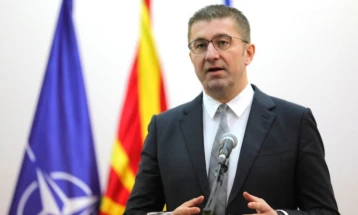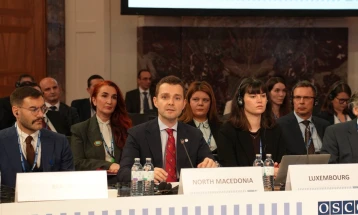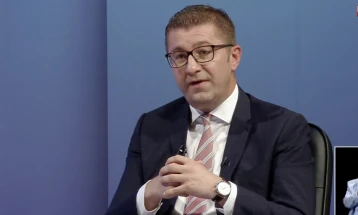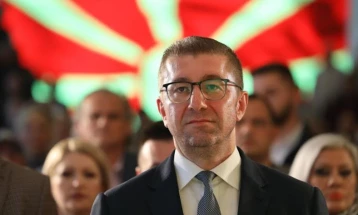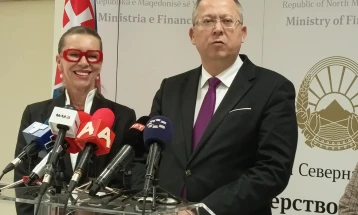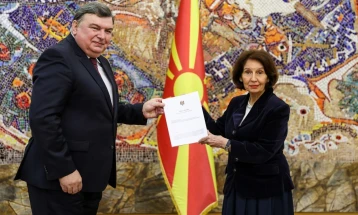Construction on ‘Konsko’ dam officially completed, dubbed ‘country’s largest project in past 50 years’
- Modern irrigation of at least 6.500 hectares annually, a five-time increase in arable land, reduced costs and more competitive production will be the benefits of the “Konsko” dam which has officially completed construction, said officials. Attendees at an event marking the completion on Sunday said the project for the dam’s construction is the country’s largest in the past 50 years, and it represents an investment worth more than EUR 40 million secured directly from the Budget of the Ministry of Agriculture, Forestry and Water Economy.
- Post By Angel Dimoski
- 13:49, 10 March, 2024
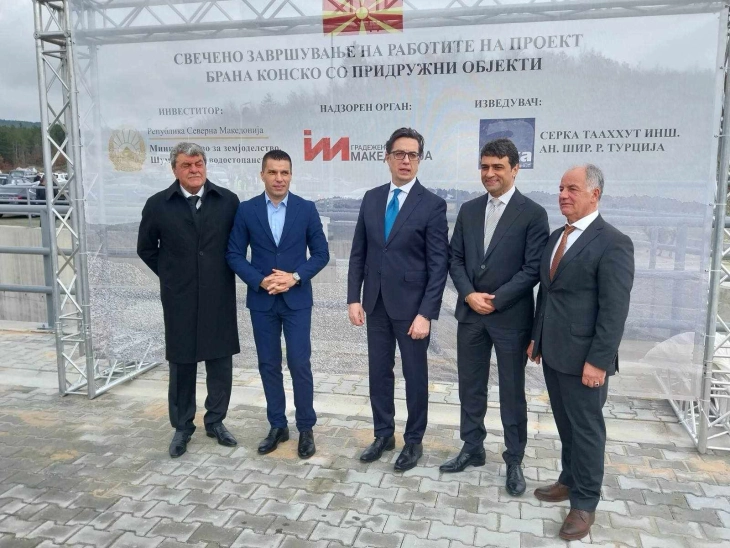
Skopje, 10 March 2024 (MIA) – Modern irrigation of at least 6.500 hectares annually, a five-time increase in arable land, reduced costs and more competitive production will be the benefits of the “Konsko” dam which has officially completed construction, said officials. Attendees at an event marking the completion on Sunday said the project for the dam’s construction is the country’s largest in the past 50 years, and it represents an investment worth more than EUR 40 million secured directly from the Budget of the Ministry of Agriculture, Forestry and Water Economy.
Apart from irrigation, the water from the dam’s reservoir will be used for the production of electricity as well. Officials said the reservoir would also support the development of rural tourism, and would receive added value with the planned installation of floating photovoltaics.

“This is a historic day for the country, for its agriculture, for this region, for the citizens and for the Government. The Konsko dam has been fully constructed, it will remain as a testament of a time when the needs of the country and the citizens were the priority. This is the largest capital project in the region in the past 20 years and the largest in the country in the past 50. We went through the Covid crisis, but nothing stopped us from realizing this investment worth over EUR 40 million,” said the Minister of Agriculture, Forestry and Water Economy, Ljupcho Nikolovski, at the event.
According to President Stevo Pendarovski, the construction of the “Konsko” dam is one of the most serious investments in Macedonian agriculture, but also in the field of energy since, he said, the transport of water for irrigation can also be used for the production of electricity.

“With this new reservoir, the fertile Macedonian south will have a chance to access additional reserves of irrigation water. In addition to the Gevgelija region, the reservoir will also be able to supply irrigation water to Bogdanci and surrounding areas, as well as the Dojran region. I believe that with the largest investment in the past few decades in the Gevgelija region, we are restoring focus and attention on agriculture and the development of our southern region. I expect that similar projects will follow in other parts of the country,” said Pendarovski.
The President also touched upon climate change.
“We are increasingly witnessing droughts and lack of rainfall, so each drop of water for irrigation is especially precious. When the price of food is constantly going up on a global level and there are shortages of certain products, it is essential that we maintain a stable and high quality agricultural production,” he stressed

SDSM leader and former Prime Minister Dimitar Kovachevski highlighted the importance of the dam’s construction for the country’s agriculture.
“We are putting an end to a six-decade-old challenge. As of today, there will be enough water for irrigation and the development of agriculture in this region. This dam, the country’s largest project in the past 50 years, will also develop tourism, soon investors will arrive in order to construct buildings here,” stressed Kovachevski.

The event was also attended by former Prime Minister Zoran Zaev, MPs, government representatives, mayors, heads of public enterprises.
Construction on the project was done by a Turkish consortium made up of “Serka” and “Ak-Eli”. The project was supervised by the Civil Engineering Institute.
Photo/Video: MIA
